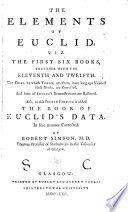 | Robert Simson - Trigonometry - 1762 - 488 pages
...C^ED PROP. XXXVI. THEO R. TF from any point without a circle two ftraight lines be drawn, one of which cuts the circle, and the other touches it ; the rectangle...the circle, and the part of it without the circle, {hall be equal to the fquare of the line which touches it. Let D be any point without the circle ABC,... | |
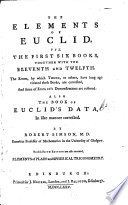 | Robert Simson - Trigonometry - 1775 - 534 pages
...&c. D PROP. XXXVI. THEO R. Ffrom any point without a circle two ftraight lines be drawn, one of which cuts the circle, and the other touches it ; the rectangle...the circle, and the part of it without the circle, fliall be equal to the fquare of the line which touches it. Let D be any point without the circle ABC,... | |
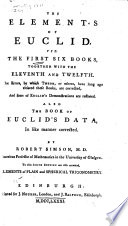 | Euclid - 1781 - 552 pages
...&c. PROP. XXXVL THEO R. IF from any point without a circle two ftraight lines be drawn, one of which cuts the circle, and the other touches it ; the rectangle...the circle, and the part of it without the circle, fhall be equal to the fquarc of the line which touches it. Let D be any point without the circle ABC,... | |
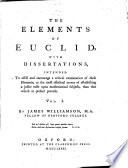 | Euclid, James Williamson - Euclid's Elements - 1781 - 324 pages
...point be taken without a circle, and two ftraight lines fall from it upon the circle ; and one of them cuts the circle and the other touches it; the rectangle contained by the whole cutting line and the fegment without, taken between the point and the convex circumference, will be... | |
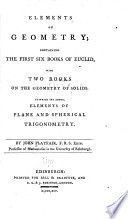 | Euclid, John Playfair - Euclid's Elements - 1795 - 462 pages
...two ftraight lines be drawn, one of which cuts the circle, and the other touches it ; the reftangle contained by the whole line which cuts the circle, and the part of ,t without the circle, fhall be equal to the fquare of the line which touches it. Let D be any point... | |
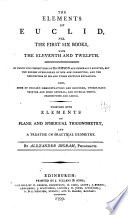 | Alexander Ingram - Trigonometry - 1799 - 374 pages
...a PROP. XXXVI. THEOR. IF from any point without a circle, two ftraight lines be drawn, one of which cuts the circle, and the other touches it ; the .rectangle...the circle, and the part of it without the circle, fhall be equal to the fquare of the line which touches it. Let D be any point without the circle ABC,... | |
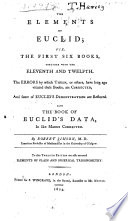 | Robert Simson - Trigonometry - 1804 - 530 pages
...THEOR. IF from any point without a circle two ftraight lines be drawn, one of which cuts the circle, snd the other touches it ; the rectangle contained by...the circle, and the part of it without the circle, fhall be equal to the fquare of the line which touches it. Let D be any point without the circle ABC,... | |
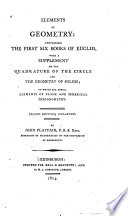 | John Playfair, Euclid - Circle-squaring - 1804 - 468 pages
...circle there be drawn two ftraight lines, one of which cuts the circle. and the other meets it •, if the rectangle contained by the whole line, which cuts...the circle, and the part of it without the circle, be equal to the fquare of the line which meets it, the line which meets fhall touch the circle. b is.... | |
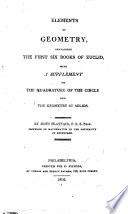 | John Playfair - Mathematics - 1806 - 320 pages
...D. PROP. XXXVI. THEOR. IF from any point without a circle two straight lines be drawn, one of which cuts the circle, and the other touches it, the rectangle...equal to the square of the line which touches it. Let D be any point without the circle ABC, and DCA, PB two straight lines drawn from it, of which DCA... | |
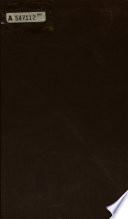 | Robert Simson - Trigonometry - 1806 - 546 pages
...the other meets the circle, and that the rectangle AB, BC contained by the whole of the cutting line, and the part of it without the circle, is equal to the square of BD which meets it ; d37. 3. the straight line BD touches d the circle ACD ; and because BD touches... | |
| |